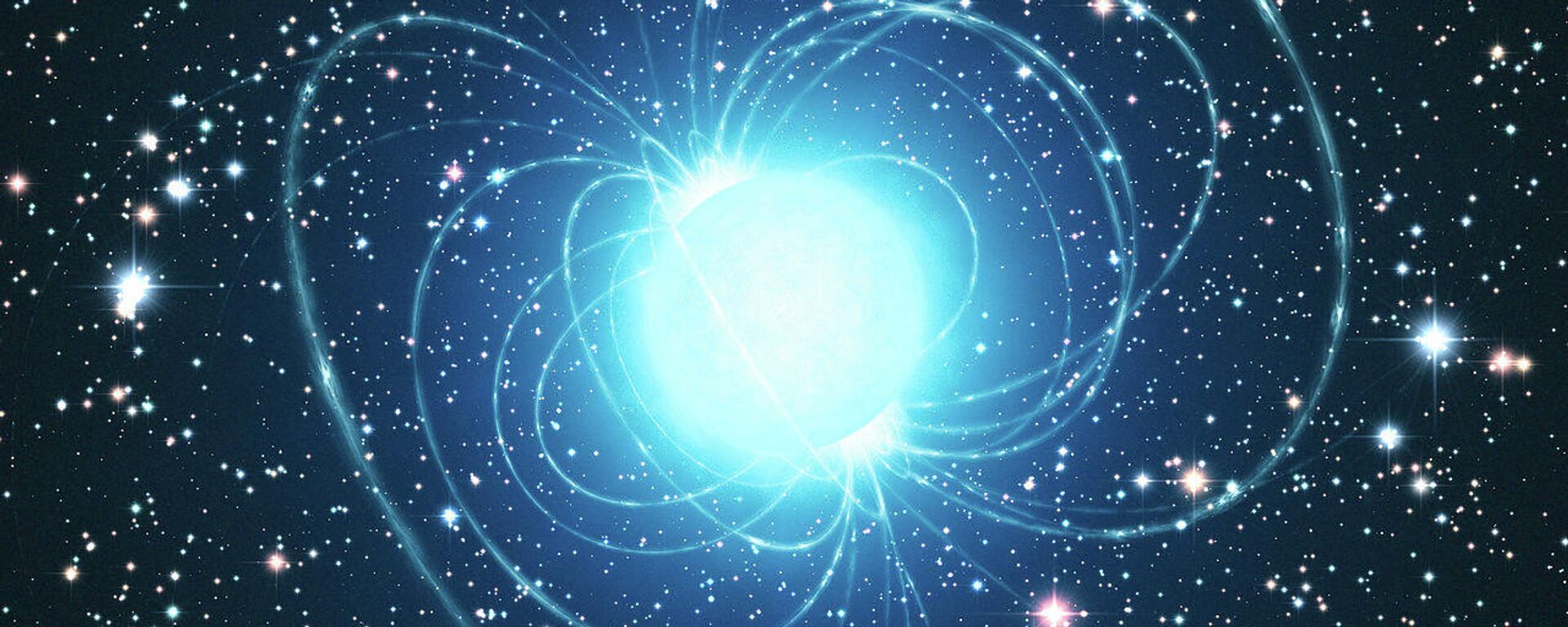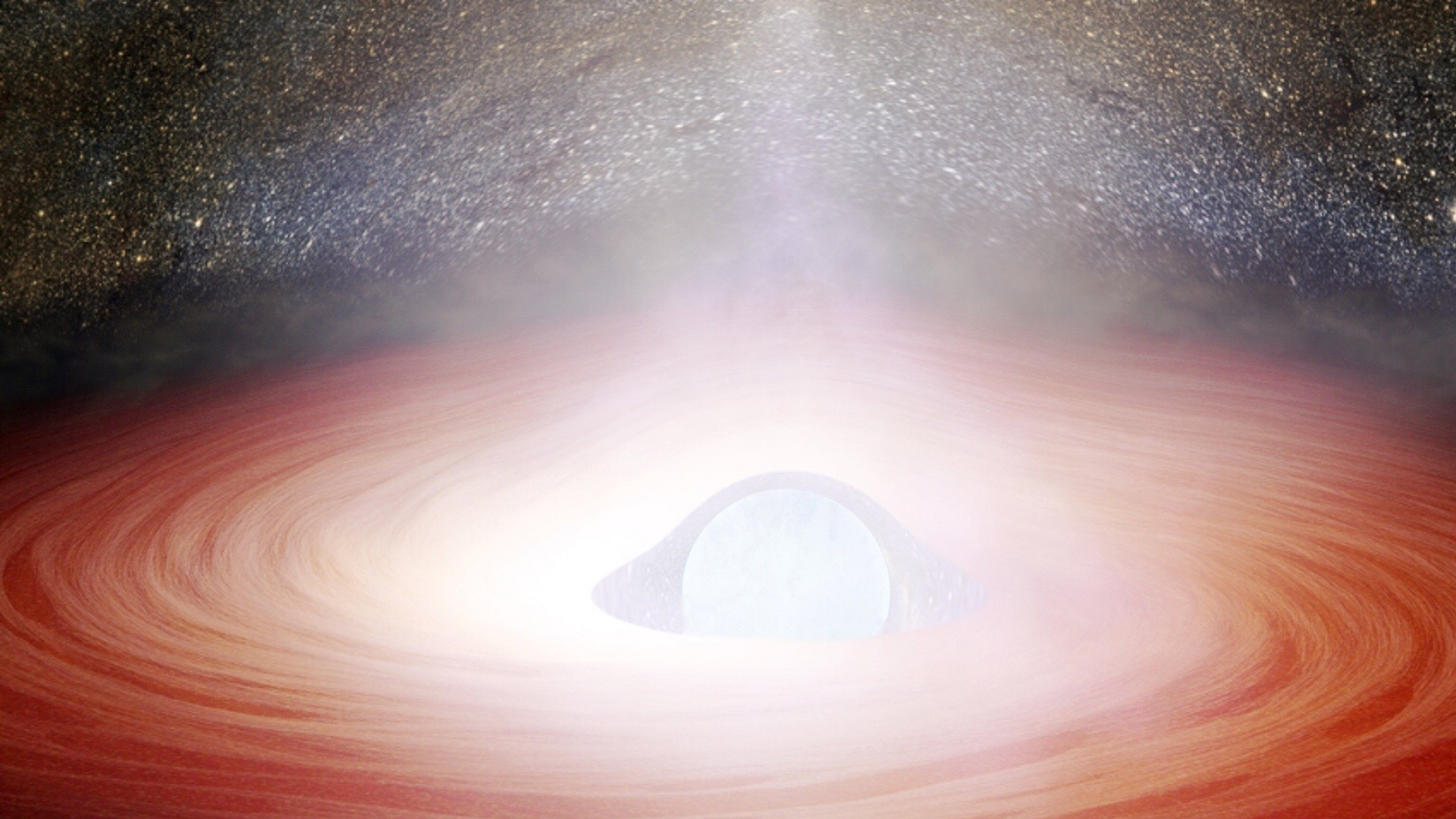https://sputnikglobe.com/20231211/astronomers-confirm-heaviest-elements-forged-by-colliding-neutron-stars-1115527103.html
Astronomers Confirm Heaviest Elements Forged by Colliding Neutron Stars
Astronomers Confirm Heaviest Elements Forged by Colliding Neutron Stars
Sputnik International
A group of astronomers have confirmed a theory that super-heavy elements are created not inside the cores of burning stars, as many lighter elements are, but in the ultra-violent collisions between neutron stars.
2023-12-11T22:46+0000
2023-12-11T22:46+0000
2023-12-11T22:43+0000
beyond politics
physics
astronomy
nuclear fission
neutron star
collision
superheavy elements factory
https://cdn1.img.sputnikglobe.com/img/07e5/0c/07/1091304264_0:702:1537:1566_1920x0_80_0_0_c0519ecf0948b41e028a9fe7269a332e.png
In the process, officials also accomplished a first for astrophysics: observing natural nuclear fission in space. Their findings are summarized in a paper published in the journal Science on Thursday.Nuclear fission is the explosive process by which an unstable atom breaks apart, releasing fragments that become smaller elements, as well as highly energized particles or waves collectively called nuclear radiation. It is the force behind nuclear weapons like those that destroyed the Japanese cities of Hiroshima and Nagasaki in 1945.The opposite of fission is fusion, when two smaller elements combine to form a larger one. This process emits huge amounts of energy as well, and it is well-documented in nature as the “engine” that keeps stars like our sun shining bright. However, nuclear fission in nature is rare by comparison.Mumpower and his crew made the discovery by observing 42 neutron stars, which are ultra-dense cores of large stars that collapsed on themselves when the rest of the star exploded into a supernova. Sometimes, neutron stars exist in pairs, which slowly spiral into one another. When they collide, it’s exceedingly violent, forcing together huge amounts of highly compact matter that’s contained under massive amounts of pressure and heat - the perfect place for atoms to fuse together.In this environment, it’s really easy for atoms to vacuum up a lot of spare neutrons, or neutral particles from inside of atomic cores. In fact, it’s so easy that they will form elements so big that they become unstable and undergo nuclear fission, becoming several smaller and more stable atoms.Mumpower’s team did the math in 2020 on how all of this might go down: how big of an atom could be formed by this vacuuming-up process? How would they break apart into smaller atoms? What atoms would those be?The team found it would eventually result in the creation of large amounts of light precision metals such as ruthenium, rhodium, palladium and silver - as well as rare earth nuclei, like europium, gadolinium, dysprosium and holmium. When they looked at dozens of stars near to where neutron stars had collided, they found high quantities of those same heavy elements."As we’ve acquired more observations, the cosmos is saying, 'hey, there’s a signature here, and it can only come from fission.'"The lighter elements in the periodic table, those lighter than iron (atomic number 26), are already known to be produced by nuclear fusion in burning stellar cores, so the team’s discovery confirms where the remainder of the Periodic Table comes from after decades of mystery.
https://sputnikglobe.com/20230817/astronomers-spot-large-helium-star-likely-to-become-mysterious-magnetar-1112691416.html
https://sputnikglobe.com/20231026/astronomers-spot-mysterious-almost-dark-galaxy-three-times-larger-than-any-cluster-1114512348.html
Sputnik International
feedback@sputniknews.com
+74956456601
MIA „Rossiya Segodnya“
2023
News
en_EN
Sputnik International
feedback@sputniknews.com
+74956456601
MIA „Rossiya Segodnya“
Sputnik International
feedback@sputniknews.com
+74956456601
MIA „Rossiya Segodnya“
how are heavy elements created, what happens when neutron stars collide, is there nuclear fission in space
how are heavy elements created, what happens when neutron stars collide, is there nuclear fission in space
Astronomers Confirm Heaviest Elements Forged by Colliding Neutron Stars
A group of astronomers have confirmed a theory that the super-heavy elements in the Periodic Table are created not inside the cores of burning stars, as many lighter elements are, but in the ultra-violent collisions between neutron stars, some of the densest objects in the universe.
In the process, officials also accomplished a first for astrophysics: observing natural nuclear fission in space. Their findings are summarized in a paper
published in the journal Science on Thursday.
Nuclear fission is the explosive process by which an unstable atom breaks apart, releasing fragments that become smaller elements, as well as highly energized particles or waves collectively called nuclear radiation. It is the force behind nuclear weapons like those that destroyed the Japanese cities of Hiroshima and Nagasaki in 1945.
The opposite of fission is fusion, when two smaller elements combine to form a larger one. This process emits
huge amounts of energy as well, and it is well-documented in nature as the “engine” that keeps stars like our sun shining bright.
However, nuclear fission in nature is rare by comparison.“People have thought fission was happening in the cosmos, but to date, no one has been able to prove it,” Matthew Mumpower, a theoretical physicist at Los Alamos National Laboratory and co-author of the paper, said in a news release.
Mumpower and his crew made the discovery by observing 42 neutron stars, which are
ultra-dense cores of large stars that collapsed on themselves when the rest of the star exploded into a supernova. Sometimes, neutron stars exist in pairs, which slowly spiral into one another. When they collide, it’s exceedingly violent, forcing together huge amounts of highly compact matter that’s contained under massive amounts of pressure and heat - the perfect place for atoms to fuse together.
In this environment, it’s really easy for atoms to vacuum up a lot of spare neutrons, or neutral particles from inside of atomic cores. In fact, it’s so easy that they will form elements so big that they become unstable and undergo nuclear fission, becoming several smaller and more stable atoms.

17 August 2023, 21:12 GMT
Mumpower’s team did the math in 2020 on how all of this might go down: how big of an atom could be formed by this vacuuming-up process? How would they break apart into smaller atoms? What atoms would those be?
Officials found that this process could produce atoms much larger than uranium, the largest naturally-occurring element here on Earth, and potentially even more massive than the biggest artificial atoms humans have created in labs.
The team found it would eventually result in the creation of large amounts of light precision metals such as ruthenium, rhodium, palladium and silver - as well as rare earth nuclei, like europium, gadolinium, dysprosium and holmium. When they looked at dozens of stars near to where neutron stars had collided, they found high quantities of those same heavy elements.

26 October 2023, 21:24 GMT
"The only plausible way this can arise among different stars is if there is a consistent process operating during the formation of the heavy elements," Mumpower said. "This is incredibly profound and is the first evidence of fission operating in the cosmos, confirming a theory we proposed several years ago."
"As we’ve acquired more observations, the cosmos is saying, 'hey, there’s a signature here, and it can only come from fission.'"
The lighter elements in the periodic table, those lighter than iron (atomic number 26), are already known to be produced by nuclear fusion in burning stellar cores, so the team’s discovery confirms where the remainder of the Periodic Table comes from after decades of mystery.




